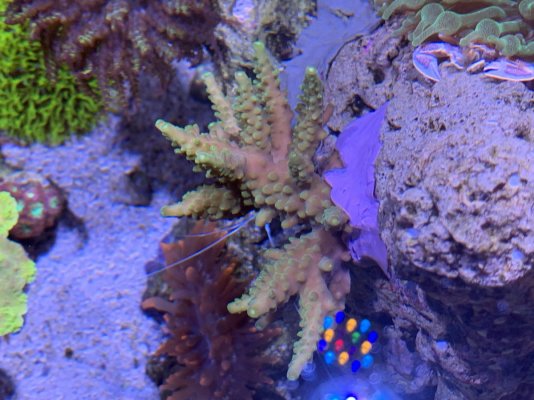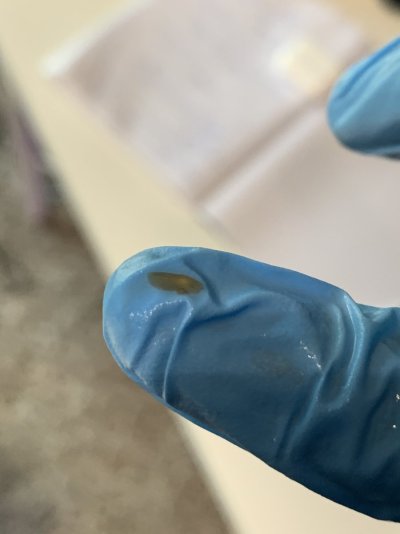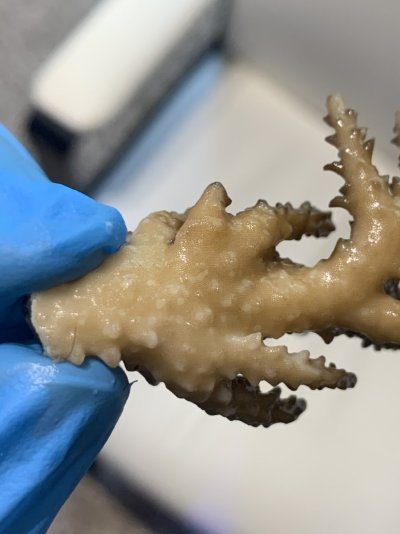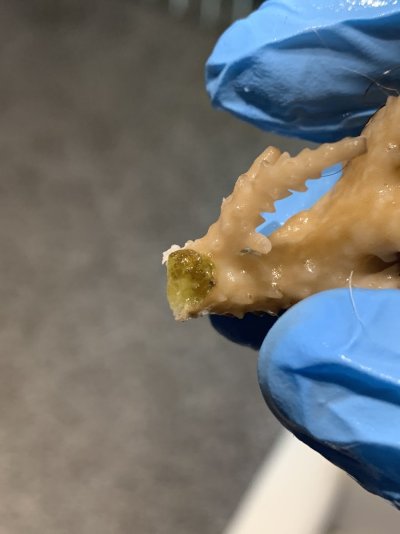- Joined
- Jun 3, 2020
- Messages
- 84
- Reaction score
- 142
I have a couple of pieces of acropora that seems to have some sort of bubbling disease.
This is some green mariculture piece

This is a bonsai acro that i got from a fellow reefer

As you can see they tissue seems bloated or bubbled, but its hard to touch. I did some research initially and found some threads on tissue bubbling disease (a bacterial infection) which looked similar to this, they just suggested, maintaining proper flow and stable conditions and they would recover, but its been months and it never improved, the growth also have seemed to have stopped/slowed way down, but it did not bleach.
I suspected flatworms right from the start, so i took turkey baster to these acros at different times of day and night several times over the months, hoping i could see any flatworm flying off, didnt find any, i dont see bite marks thats typical to AEFW, so i am not sure what this is. I am guessing some sort of bacterial infection at this point
This is how they looked when i bought them


I started noticing this issue in the bonsai acro first and then after sometime the green acro started showing symptoms.
I decided to try KZ flatworm stop since there might be a chance flatworms are present but not evidently visible. Also for their claim that KZ flatworm stop supposedly strengthens coral tissues and helps regeneration. Right after i started dosing it, the bonsai acro started to STN and the green one seems to have regained color at certain patches in the colony. At this point, i dont care if i lose these acros, the flatworm stop is doing something. I havent tried dipping them, since they are all well encrusted to the rock and i didnt want to break them off. i am just worried if this disease/issue will pass on to other acros, i have three more that are doing well, no sign of this bubbling, other sps, montipora, stylophora, pocillopora and seriatopora are unaffected
This is some green mariculture piece
This is a bonsai acro that i got from a fellow reefer
As you can see they tissue seems bloated or bubbled, but its hard to touch. I did some research initially and found some threads on tissue bubbling disease (a bacterial infection) which looked similar to this, they just suggested, maintaining proper flow and stable conditions and they would recover, but its been months and it never improved, the growth also have seemed to have stopped/slowed way down, but it did not bleach.
I suspected flatworms right from the start, so i took turkey baster to these acros at different times of day and night several times over the months, hoping i could see any flatworm flying off, didnt find any, i dont see bite marks thats typical to AEFW, so i am not sure what this is. I am guessing some sort of bacterial infection at this point
This is how they looked when i bought them
I started noticing this issue in the bonsai acro first and then after sometime the green acro started showing symptoms.
I decided to try KZ flatworm stop since there might be a chance flatworms are present but not evidently visible. Also for their claim that KZ flatworm stop supposedly strengthens coral tissues and helps regeneration. Right after i started dosing it, the bonsai acro started to STN and the green one seems to have regained color at certain patches in the colony. At this point, i dont care if i lose these acros, the flatworm stop is doing something. I havent tried dipping them, since they are all well encrusted to the rock and i didnt want to break them off. i am just worried if this disease/issue will pass on to other acros, i have three more that are doing well, no sign of this bubbling, other sps, montipora, stylophora, pocillopora and seriatopora are unaffected



















